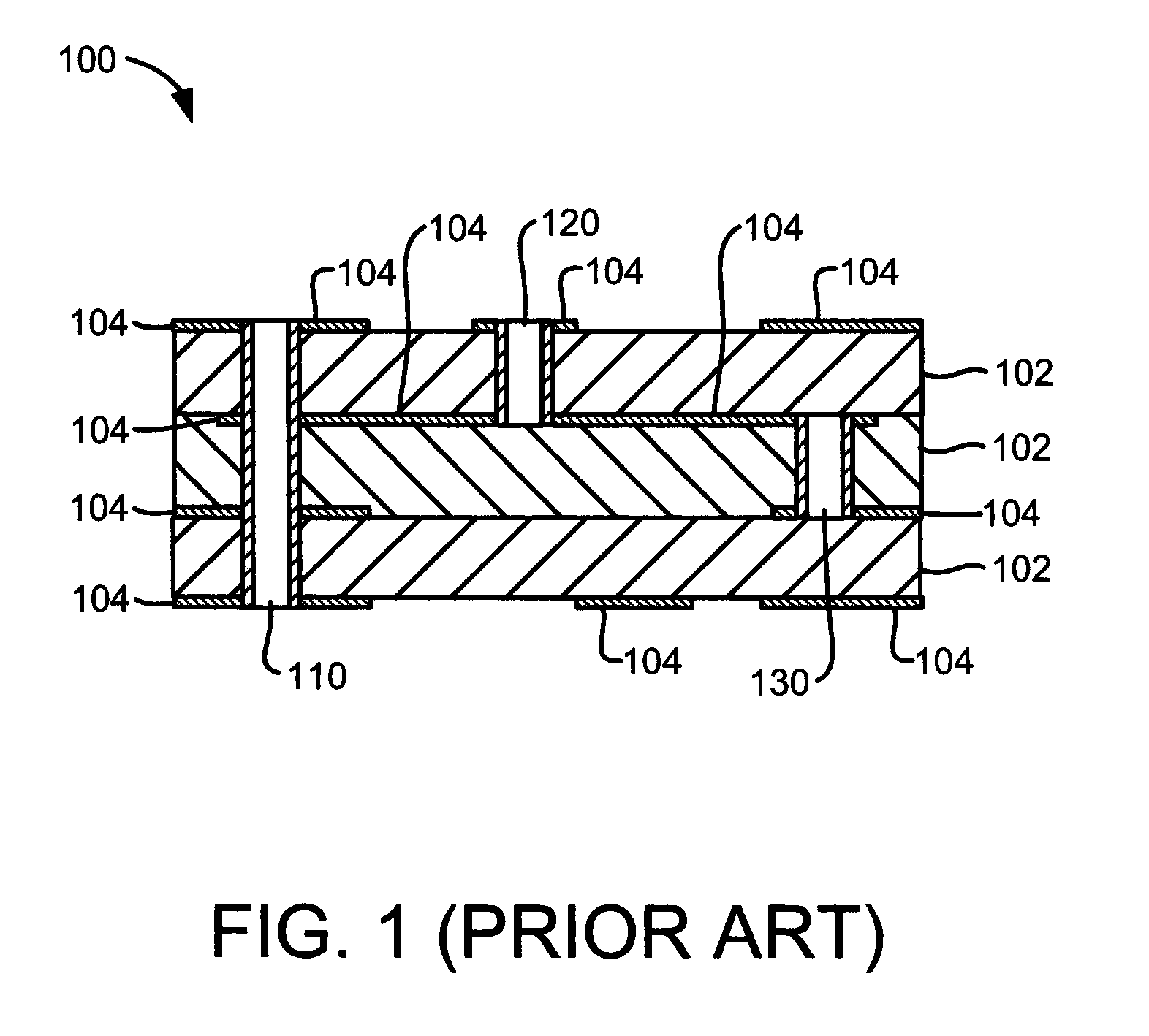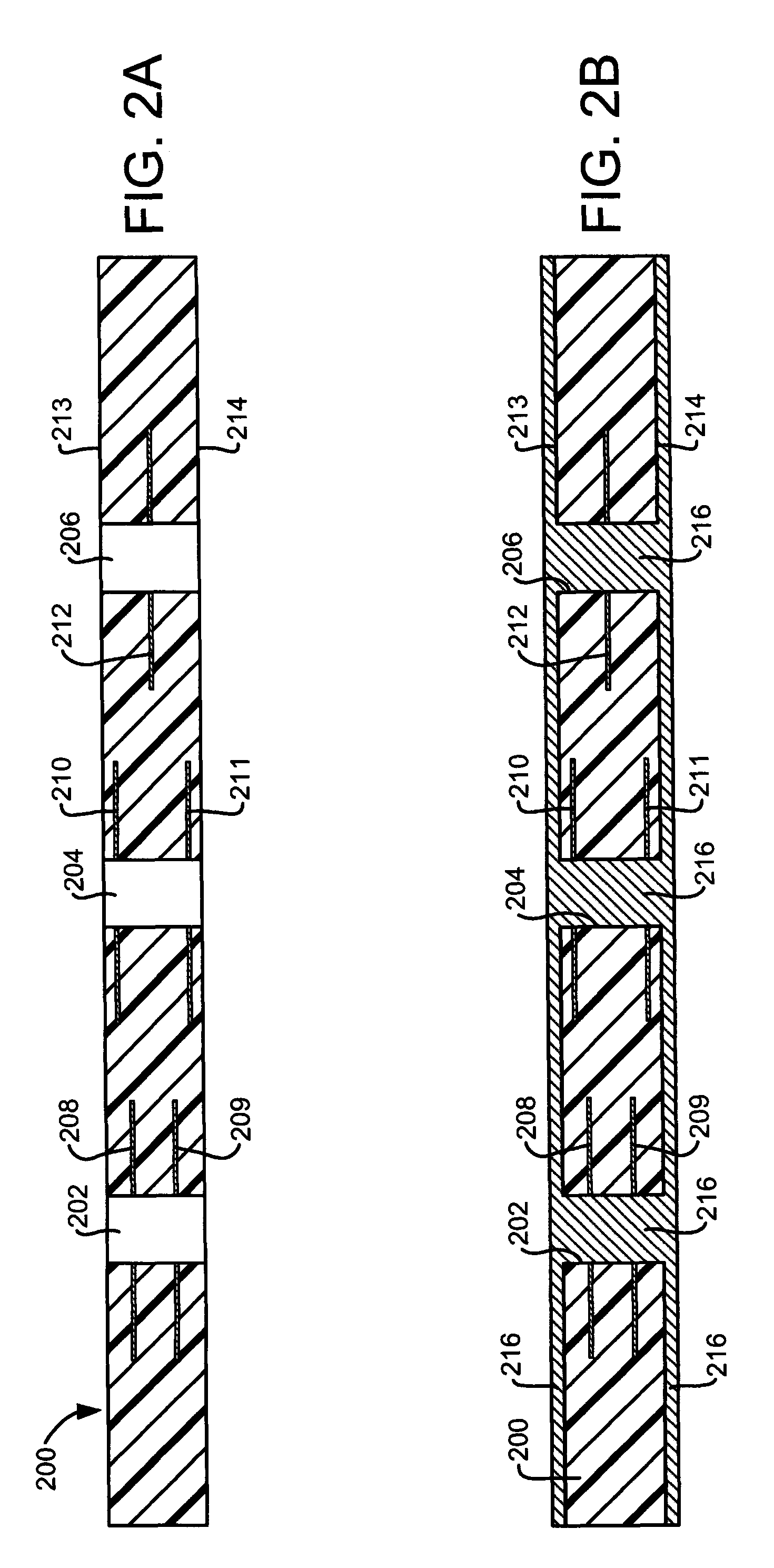Method of forming a substrate having a plurality of insulator layers
a technology of insulator layer and substrate, which is applied in the direction of resistive material coating, circuit masks, nuclear engineering, etc., can solve the problems of pth vias and blind vias being significantly more expensive to fabricate than blind vias, and it is typically impractical to significantly increase the wiring density of substrates. to achieve the effect of increasing (, 2) the wiring density
- Summary
- Abstract
- Description
- Claims
- Application Information
AI Technical Summary
Benefits of technology
Problems solved by technology
Method used
Image
Examples
Embodiment Construction
[0022]1.0 Overview
[0023]In accordance with the preferred embodiments of the present invention, a substrate (e.g., a printed wiring board or other substrate, such as an interconnect substrate) includes a plurality of insulator layers and internal conductive traces. First and second through-holes extend completely through the substrate and respectively pass through first / second ones and third / fourth ones of the internal conductive traces, which are at different depths within the substrate. Photolithographic techniques are used to generate plated-through-hole (PTH) plugs of controlled, variable depth in the through-holes before first / second conductive vias are plated onto the first through-hole and before third / fourth conductive vias are plated onto the second through-hole. The depth of these PTH plugs is controlled (e.g., using a photomask and / or variable laser power) to prevent the conductive vias from extending substantially beyond their respective internal conductive traces, thereb...
PUM
| Property | Measurement | Unit |
|---|---|---|
| conductive | aaaaa | aaaaa |
| neutral density | aaaaa | aaaaa |
| power | aaaaa | aaaaa |
Abstract
Description
Claims
Application Information
 Login to View More
Login to View More - R&D
- Intellectual Property
- Life Sciences
- Materials
- Tech Scout
- Unparalleled Data Quality
- Higher Quality Content
- 60% Fewer Hallucinations
Browse by: Latest US Patents, China's latest patents, Technical Efficacy Thesaurus, Application Domain, Technology Topic, Popular Technical Reports.
© 2025 PatSnap. All rights reserved.Legal|Privacy policy|Modern Slavery Act Transparency Statement|Sitemap|About US| Contact US: help@patsnap.com



